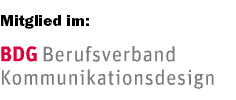Psychological Triggers Behind Live Blackjack
Live Blackjack merges traditional table gameplay with real-time digital interactivity, presenting players with an authentic casino atmosphere from the comfort of their personal environment. What distinguishes it from digital-only blackjack is the presence of human dealers, physical cards, and multi-camera streaming—elements that heighten immersion and emotional engagement. The psychological responses these features trigger are complex and often subconscious, involving a blend of anticipation, competition, and social cues.
These live games aren’t solely about chance or skill—they're also finely tuned behavioural experiences. Players often underestimate the nuanced psychological elements involved, such as timing mechanics, visual stimulation, and interpersonal cues, all designed to retain attention and subtly guide decisions. Recognising these influences can empower players to maintain a more informed and controlled approach to gameplay.
What Makes Live Blackjack Unique
Unlike standard online blackjack, live dealer variants offer face-to-face interaction through video feeds, simulating the social cues found in land-based venues. This social aspect makes the game feel more engaging and less algorithmic, with human unpredictability influencing pace and tone. Watching the dealer shuffle cards or interact in real-time gives an impression of fairness and transparency, reducing suspicion of rigged outcomes.
The Growing Popularity of Live Dealer Games
The rise in live dealer game engagement reflects a broader consumer shift toward authentic experiences. As digital environments become more immersive, players seek realism, social connection, and trustworthiness. Live Blackjack delivers these expectations by blending human elements with cutting-edge technology. Additionally, the increasing availability of high-speed internet and mobile devices makes joining a live table accessible to a wider audience than ever before.
The Role of Environment and Atmosphere
The setting of a live blackjack studio isn't just functional—it's psychological. Everything from lighting to layout is carefully designed to mimic the sophistication of a land-based casino. These settings aren't arbitrary; they’re engineered to elevate mood, enhance focus, and sustain user attention over prolonged periods. A thoughtfully designed atmosphere plays an integral part in how players perceive risk and Slots Amigo reward.
Soft hues, polished tables, ambient lighting, and strategic camera angles converge to establish a luxurious and trustworthy aesthetic. Such environments can lead players to attribute credibility and professionalism to the platform. By doing so, users may become more immersed, less critical of patterns, and more susceptible to subconscious behavioural nudges embedded in the experience.
Studio Design and Its Emotional Impact
What emotional responses do deep colours, gold trims, and soft shadows trigger? Subtle elements like these evoke sensations of prestige and exclusivity. They also subconsciously encourage players to adopt a more serious, engaged mindset—one that is less likely to pause and reflect critically during high-stakes moments. It’s a calculated form of visual storytelling designed to cultivate immersion and loyalty.
Dealer Behaviour and Player Connection
Dealers aren't merely game facilitators; they serve as behavioural anchors. Their tone of voice, eye contact, and responses help humanise the experience. A friendly dealer may inspire trust, while a high-energy host could provoke competitiveness. These reactions are valuable because they can influence a player’s rhythm and willingness to take risks, reinforcing behaviours that sustain longer engagement.
Use of Ambient Sounds and Visuals
Background music, card shuffling sounds, and occasional celebratory audio cues are not afterthoughts. These are deliberately chosen stimuli crafted to maintain a steady emotional tempo. Subtle auditory triggers keep players attentive, while visual flares—like light flashes upon wins—act as dopamine cues. Together, they form an environment that both soothes and stimulates, creating an ideal setting for extended play sessions.
Cognitive Biases in Decision-Making
Decision-making in blackjack isn't purely logical—it’s riddled with cognitive biases. These mental shortcuts, although helpful in everyday life, can distort risk evaluation and lead players toward suboptimal strategies. Live environments amplify these effects due to real-time pressure and interactive elements that stimulate emotional rather than rational responses. Recognising these biases is the first step toward mitigating their impact.
These mental tendencies—like overvaluing past investments or assuming future patterns based on recent outcomes—are subtly encouraged through game structure and design. They make decisions feel intuitive when, in reality, they're often based on flawed reasoning or manipulated feedback mechanisms designed to keep engagement high.
The Illusion of Control in Blackjack Choices
Players often believe that their actions significantly influence outcomes, even when randomness governs the cards. Choosing whether to hit or stand gives an impression of agency. However, this perceived control is a psychological illusion frequently exploited in game design. Providing decisions, even inconsequential ones, increases emotional investment and perceived skill, both of which contribute to extended gameplay and greater financial commitment.
Sunk Cost Fallacy and Session Commitment
After playing multiple hands, some individuals feel compelled to continue simply because they’ve invested time and money. This “sunk cost” mentality persuades players to chase losses or “see it through,” despite negative odds. It's a cognitive trap, exacerbated in live settings where every moment feels active and personal. The pace of the game and lack of obvious exit points reinforce this fallacy, making it hard to disengage.
Gambler’s Fallacy and Recency Effects
If the last five hands were losses, surely a win must be due soon, right? This faulty logic—known as the Gambler’s Fallacy—drives many to double down or stay longer than intended. Compounding this is the recency effect, which causes recent outcomes to weigh more heavily in decision-making. These cognitive distortions thrive in fast-paced live environments where emotional highs and lows are constant.
The Impact of Social Presence
Social dynamics play a significant role in live blackjack. Observing other players’ actions or comments can subtly influence one’s own decisions. The feeling of being seen, whether through live chat or visual representation, introduces a level of accountability and competition that is absent in solo gameplay. This shared space fosters conformity, increased time investment, and heightened emotional involvement.
Even when no one is physically nearby, the idea of being part of a group modifies risk tolerance and betting habits. Social presence activates behavioural scripts that push individuals to align with group behaviour, often at the expense of personal strategy. This undercurrent of peer influence is a key feature in the psychology of live games.
Live Chat and Peer Influence
Real-time messaging among players can impact decision-making subtly but significantly. Reading that others are doubling bets or celebrating wins creates social proof—encouraging similar risk-taking. This peer influence reduces the cognitive load of decision-making by substituting social cues for personal analysis. It’s an especially potent trigger in environments where quick decisions are expected.
Performance Pressure from Observers
Knowing others can see your choices—even if only metaphorically—can instigate performance anxiety or bravado. These pressures drive some to deviate from optimal play in favour of more dramatic actions. Interestingly, this observer effect often increases with larger audience sizes or active chat participation, making the environment more competitive and emotionally charged.
Behavioural Mimicry and Group Patterns
Group dynamics often lead to behavioural mimicry, where one mirrors others' betting styles, emotional expressions, or reactions. This subconscious mirroring strengthens the sense of belonging and mutual experience. However, it also introduces uniformity that may not reflect individual strategies or preferences. Group patterns can promote herd behaviour, reinforcing collective errors or overconfidence during winning streaks.
The Reinforcement Schedule in Play
Reinforcement schedules—how often and under what conditions players are rewarded—are foundational to behavioural psychology. Live blackjack incorporates intermittent reinforcement, a model proven to be most effective at sustaining engagement. Players never know exactly when the next win will occur, which keeps attention fixed and emotions heightened. This psychological trick is a key element in prolonging play sessions.
Unlike consistent reward models, variable schedules prevent players from predicting patterns, making the game feel spontaneous and rewarding. The unpredictability creates a feedback loop that fuels continued interaction, driven by hope and curiosity more than statistical reasoning. Understanding this mechanism is essential for responsible play.
Intermittent Wins and Variable Rewards
Rewards in live blackjack are delivered unpredictably, making each hand a potential high point. This form of variable reinforcement is known to be among the most addictive psychological triggers. It fuels the idea that the next hand could turn everything around, even after a losing streak. Such variability keeps players hooked by ensuring emotional investment never drops significantly.
Psychological Effects of 'Near Misses'
Just missing a win—like losing by one point—activates reward pathways similar to actual success. These near misses create a sense of being close to winning, which in turn sustains optimism and continued betting. It’s a powerful trick of perception that keeps people engaged longer than a string of clear losses ever could. This psychological response isn't accidental; it’s a deliberate design choice in many live dealer setups.
Reward Anticipation and Dopamine Release
Anticipation, not just victory, drives dopamine release. The moment just before a card is revealed or a win is announced generates a biological response that mimics pleasure. This anticipation is addictive in itself, often more so than the actual outcome. Live blackjack capitalises on this by incorporating suspenseful pauses and interactive commentary that stretch out the moment before resolution.
Visual and Auditory Cues
What we see and hear while playing deeply influences how we feel, think, and behave. In live blackjack, audiovisual cues are meticulously crafted to maintain focus, signal excitement, and guide decisions without overt instruction. These cues operate just below the threshold of conscious awareness, allowing them to influence behaviour with minimal resistance.
By synchronising sound effects, colour schemes, and light transitions with gameplay events, designers create an emotional landscape that supports engagement and repeat participation. It’s not merely decoration—it’s an integrated part of the psychological architecture behind the game experience.
Sound Design as a Trigger of Excitement
Subtle audio elements—like the shuffle of cards, dealer announcements, or win chimes—serve as auditory reinforcers. These sounds trigger emotional responses, priming players for action. Even silence is carefully deployed, building suspense before pivotal moments. By modulating sound intensity and frequency, developers craft a sensory rhythm that mirrors emotional highs and lows, subtly encouraging continued participation through auditory pleasure and tension.
Lighting and Motion Effects on Focus
Bright accents, camera zooms, and flickers of motion are used to direct player attention. These visual cues emphasise pivotal moments—like card reveals or bet placements—while sustaining engagement. Constant visual stimulation limits the likelihood of mental fatigue, keeping players immersed for longer durations. Lighting effects also mimic real-world cues of urgency or celebration, adding layers of emotional complexity to the experience.
Colour Psychology in Game Interface
Every shade in the user interface holds psychological significance. Deep greens and reds are frequently employed due to their associations with wealth, urgency, and success. Blue tones tend to relax, while gold adds a sense of exclusivity. Such colours do more than decorate—they influence decision-making speed and emotional response. Developers harness these associations to create environments that feel familiar yet compelling, guiding players toward sustained engagement.
Personalisation and Player Profiling
Modern live blackjack platforms utilise player data to create more tailored gaming experiences. These adaptive features can shape gameplay flow, dealer interaction, and even promotional tactics. While this enhances engagement, it also introduces ethical questions around informed consent and behavioural nudging. Understanding how platforms personalise the experience can empower users to maintain greater autonomy in their play.
Through behavioural analytics, platforms can predict preferences and tailor in-game prompts, background settings, and dealer responses. This responsiveness feels personalised, yet it subtly drives user behaviour in predetermined ways. As this technology becomes more advanced, recognising these manipulations becomes essential for responsible participation.
Tailored Game Settings and Behavioural Hooks
From betting limits to interface themes, players often believe they are in control of settings. However, these choices are frequently informed by prior behaviour and psychological profiling. Platforms may suggest certain tables or adjust speed based on past activity, reinforcing habits that favour longer sessions. These “customisations” function as behavioural hooks, enhancing emotional investment and reducing the urge to exit or reflect critically.
Adaptive Dealer Responses and Retention
Dealers may adjust their tone, pacing, or dialogue based on observed player reactions. For instance, a slower pace may be used with new users, while high-energy commentary targets competitive personalities. Though it appears organic, these interactions are often scripted or influenced by real-time analytics. They aim to build rapport and boost session length by aligning with each player’s psychological profile.
Impact of Historical Performance Feedback
Providing players with personalised statistics—like win rates or longest streaks—creates a sense of progress and identity within the game. This feedback can motivate further engagement, especially if framed positively. However, it may also reinforce loss-chasing or overconfidence. The presentation of historical data is not neutral; it's often designed to highlight achievements while downplaying volatility and long-term loss potential.
Time Distortion and Continuous Play
One of the most impactful psychological tools in live blackjack is the manipulation of time perception. Without natural breakpoints—like clocks, daylight, or session limits—players can lose track of how long they’ve been active. This temporal distortion supports longer engagement, making each additional hand feel like a minor commitment rather than a continuation of hours-long play.
Transitions between rounds are designed to be seamless, offering minimal resistance to continued participation. This constant availability, coupled with immersive design, creates a "flow" state where decision-making becomes automatic and reflective thought is suppressed. Recognising these cues allows players to implement more deliberate, conscious gameplay boundaries.
Lack of Natural Stopping Cues
In traditional casino settings, natural cues—like fatigue, table closings, or daylight—signal when to stop. Online, those cues vanish. The digital table never sleeps, never tires, and never offers a closing bell. This absence makes disengaging a conscious choice, not a situational one. Without prompts to pause or exit, many find themselves continuing far beyond intended limits.
Effects of No-Clocks and Seamless Transitions
By omitting time indicators and smoothing transitions between hands, platforms encourage uninterrupted play. Without visual clocks, it becomes difficult for players to track session length or notice when fatigue sets in. Quick animations and automatic re-bets further limit moments of reflection. Each feature, though seemingly convenient, adds to the illusion that time is standing still, reinforcing longer and less mindful sessions.
Encouragement of Extended Play Through Flow
Flow, a psychological state where a person is fully immersed and loses awareness of time, is a deliberate goal in game design. Live blackjack platforms achieve this through balanced challenge, fast feedback, and immersive visuals. Players enter a mental space where each action flows into the next without pause. While flow enhances enjoyment, it also suppresses critical thinking and impulse control—tools vital for responsible gaming.
Triggers in Promotional Tactics
Promotions in live blackjack aren't just about attracting attention—they're psychological triggers that alter perception and influence behaviour. Through tactics like loss-disguised-as-win displays, urgent countdowns, and personalised bonuses, platforms stimulate emotional reactions and prompt impulsive action. These methods are especially effective when layered atop immersive gameplay, making them potent tools for player engagement—and potentially overcommitment.
Understanding how these promotions operate can help players spot manipulative intent and decide more rationally. It becomes a matter of recognising emotional appeals masked as incentives, and treating each prompt as an invitation rather than a command. Let’s explore the mechanics of these promotional triggers.
Welcome Bonuses and 'Losses Disguised as Wins'
Welcome bonuses—while seemingly generous—are designed to create an early emotional high. These initial gains generate trust and reduce inhibition, encouraging new users to invest more. Additionally, some platforms celebrate outcomes that are technically losses but appear as wins (e.g., winning less than wagered). This "loss-disguised-as-win" feedback exploits emotional responses and can reinforce behaviours based on false perceptions of success.
Psychological Hooks in Push Notifications
Push notifications are more than reminders—they're behavioural triggers. Phrases like “You’ve got chips waiting!” or “Your table is heating up!” are engineered to incite urgency and curiosity. These messages often appear at peak user inactivity times, reactivating dormant players through emotional manipulation. Their design is based on behavioural data, making them highly effective in prompting unplanned sessions.
Countdown Timers and Scarcity Effects
Limited-time offers, expiring bonuses, and countdown clocks create artificial scarcity. This scarcity principle exploits fear of missing out (FOMO), leading players to act quickly without evaluating the true value of the offer. Timers generate stress and urgency, overriding deliberation in favour of rapid engagement. These tactics are effective precisely because they challenge our natural decision-making rhythm, forcing quick responses under perceived pressure.
Responsible Play and Awareness
Amid all these powerful psychological triggers, cultivating awareness becomes the cornerstone of responsible gameplay. Recognising the techniques at play—rather than blindly reacting—allows users to reassert control over their experience. This involves understanding both the emotional and cognitive levers being pulled and choosing to engage with full awareness rather than passive consumption.
By identifying patterns, setting limits, and questioning urges, players can resist manipulative design features and maintain a healthier relationship with live blackjack. Responsible play doesn’t mean eliminating enjoyment—it means enhancing it through informed participation. Awareness transforms the game from a passive experience into a conscious interaction, where enjoyment and self-regulation coexist.
Setzen auch Sie auf Bewegtbild.

Lassen Sie uns sprechen:
Mario Gorniok-Lindenstruth
Geschäftsführer & Kreativdirektor
Tel: 030 79740002
Mail: [email protected]
Instagram, Facebook, Linkedin
Lassen Sie uns sprechen:
Mario Gorniok-Lindenstruth
Geschäftsführer & Kreativdirektor
Tel: 030 79740002
Mail: [email protected]
Instagram, Facebook, Linkedin
Lassen Sie uns sprechen:
Mario Gorniok-Lindenstruth
Geschäftsführer & Kreativdirektor
Tel: 030 79740002
Mail: [email protected]
Instagram, Facebook, Linkedin
Lassen Sie uns sprechen:
Mario Gorniok-Lindenstruth
Geschäftsführer & Kreativdirektor
Tel: 030 79740002
Mail: [email protected]
Instagram, Facebook, Linkedin
Lassen Sie uns sprechen:
Mario Gorniok-Lindenstruth
Geschäftsführer & Kreativdirektor
Tel: 030 79740002
Mail: [email protected]
Instagram, Facebook, Linkedin
- Mostbet Jackpot und Voucher Code: Steigern Sie Ihr Wetterlebnis
- Mostbet: Ihr Portal für erstklassige Online-Wetten
- Ein kompletter Leitfaden zum Spielen von Aviator im Cashed Casino
- Glory Casino: Ultimate Gaming Destination with Sports Betting & Casino Games
- Avia Masters bringt neues Tempo ins Online-Glücksspiel
Standort Westfalen:
Brüggering 1
59494 Soest
(c) 2015–2023

